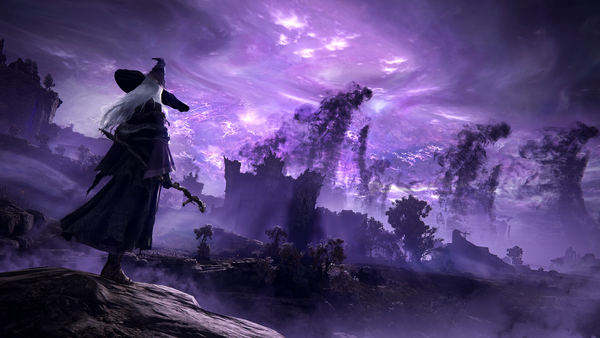Advertisement
Popular Now
Introduction
Since its release in 2019, Apex Legends has been a standout battle royale, praised for its fast-paced action, diverse character abilities, and dynamic team-based mechanics. However, as with any game that evolves over time, Apex Legends has faced a significant issue: power creep. Power creep refers to the gradual increase in strength or effectiveness of new characters, weapons, or abilities, leading to an imbalance within the game's competitive environment. This issue has become more pronounced as Apex Legends introduces new content each season, causing older characters and items to become less viable. In this article, we’ll delve deep into the problem of power creep in Apex Legends, how it affects gameplay, and what steps Respawn Entertainment has taken (or should take) to address this issue.




The Early Days: A Balanced Start
In the first few seasons of Apex Legends, the game was relatively well-balanced. Each legend brought a unique set of skills to the table, and the weapons had a fair distribution of power. While certain characters like Wraith and Pathfinder were early favorites, there was no overwhelming sense of imbalance.Introduction of Legends with Measured Power
In the beginning, Respawn introduced legends with abilities that complemented existing ones, rather than overpowering them. For example, Octane’s Season 1 introduction brought a speed-based skill set that offered tactical advantages without overshadowing legends like Wraith, who specialized in movement.Weapon Balance in the Early Game
Similarly, the weapons in the first seasons were reasonably balanced. The developers ensured that no weapon had a disproportionately high kill rate, allowing for skill-based gameplay to shine through.Introduction of New Legends: The Start of Power Creep
By Season 3, with the introduction of Crypto, Apex Legends began to show signs of power creep. Crypto’s drone ability, which allowed for reconnaissance and remote EMP strikes, introduced a legend with greater utility than most.Crypto’s Impact on Team Dynamics
Crypto’s introduction changed team dynamics drastically. His ability to gather intel from a distance put him a step above legends like Bloodhound, who had to physically engage with the enemy to provide similar information.Weapons Taking a Turn
At the same time, the introduction of new weapons like the Charge Rifle also started to shift the game’s balance. The Charge Rifle, in its early days, was deemed too powerful, leading to a rapid meta shift where long-range combat became dominant.The Rise of Overpowered Legends: Horizon and Seer
By the time Horizon was introduced in Season 7, the power creep issue had become a significant talking point in the Apex Legends community. Horizon’s gravity lift ability provided unparalleled vertical mobility, outclassing legends like Pathfinder.Horizon’s Mobility Dominance
Horizon’s mobility-centric kit made her a favorite among players, particularly in high-level play. Her tactical lift allowed for quick repositioning, both offensively and defensively, which disrupted the balance previously maintained by legends like Octane and Pathfinder.Seer’s Game-Changing Abilities
Season 10 saw the introduction of Seer, arguably one of the most controversial legends. His heartbeat sensor and tactical ability, which could reveal and interrupt enemies, made him overpowered. Seer’s arrival marked a turning point where the community felt that new legends were being designed with too much utility, pushing older legends out of the competitive meta.Weapons and Power Creep: The Case of the Rampage LMG
While power creep was evident in legends, weapons were not immune to this issue. The Rampage LMG, introduced in Season 10, was a prime example. Its ability to be charged with a thermite grenade, combined with its slow, high-damage shots, made it a powerhouse.Rampage Dominating the Meta
The Rampage’s introduction pushed other heavy weapons like the Spitfire and Flatline out of favor. Players began relying on the Rampage in both casual and competitive play, further exacerbating the imbalance between older and newer weapons.The Decline of Shotguns
At the same time, the effectiveness of shotguns like the Peacekeeper and Mastiff began to wane. As long-range weapons became more prevalent, close-quarters combat lost its appeal, shifting the game’s meta to a more distant engagement style.
The Effect of Power Creep on Competitive Play
Power creep doesn’t just affect casual players; it has a profound impact on the competitive scene. As certain legends and weapons become more dominant, teams are forced to adapt or risk falling behind.Pro Players and Meta Adaptation
Pro players often have to follow the meta closely, picking the strongest legends and weapons to stay competitive. This reduces diversity in gameplay, as teams gravitate towards a handful of overpowered legends like Horizon or Seer, limiting strategic variety.The Evolving Meta and Viewer Experience
For viewers of Apex Legends esports, power creep can lead to a repetitive viewing experience. Seeing the same legends and weapons dominate tournaments reduces the excitement and unpredictability that defined the early days of the game.Respawn’s Approach: Buffs and Nerfs
Respawn has made multiple attempts to combat power creep through balancing patches, buffing weaker legends and nerfing stronger ones. However, these changes have often been met with mixed reactions from the community.Buffing Older Legends
In an attempt to keep older legends relevant, Respawn has buffed characters like Mirage and Fuse. However, these buffs have not always been enough to bring them on par with newer, more versatile legends like Seer or Horizon.Nerfing Overpowered Legends
Respawn has also nerfed overpowered legends like Seer shortly after their release. While this helps curb immediate dominance, the fact that these legends are released in such a state raises questions about the game’s balancing philosophy.Weapon Balancing Efforts: Successes and Failures
Respawn has been somewhat successful in balancing weapons through patches, but some changes have been more effective than others.Adjusting the Rampage and Spitfire
After community feedback, Respawn nerfed the Rampage’s damage and fire rate, bringing it more in line with other heavy weapons. This was a positive step towards balancing the weapon meta.Continued Problems with Long-Range Dominance
Despite these efforts, long-range weapons continue to dominate, with sniper rifles and marksman weapons remaining strong choices. The lack of balance in engagement distances makes certain maps and strategies more viable than others.The Struggle to Keep Older Legends Relevant
One of the core issues with power creep is the struggle to keep older legends relevant. Legends like Gibraltar, Bangalore, and Lifeline, who were once staples of Apex Legends, have seen their pick rates drop as newer legends offer more utility.The Decline of Lifeline
Lifeline, once the go-to support legend, has been overshadowed by characters like Newcastle, who offer better defensive capabilities alongside healing. Her kit, which has remained mostly unchanged, struggles to keep up with the evolving game.Gibraltar’s Resilience
Interestingly, Gibraltar has managed to maintain a strong presence in competitive play despite the influx of new legends. His dome shield and defensive capabilities remain unmatched, making him one of the few older legends to stay relevant.Community Feedback: How Players Are Responding
The Apex Legends community has been vocal about the issue of power creep, with many players feeling that Respawn prioritizes new content over maintaining balance.Discussions on Forums and Social Media
Players frequently discuss the issue on platforms like Reddit and Twitter, often calling for more careful balancing of new legends and weapons before they are introduced. Some suggest that Respawn should focus on reworking older legends instead of constantly introducing new ones.Player Burnout
Power creep has also led to player burnout, with some long-time players feeling frustrated that their favorite legends or weapons are no longer viable in the current meta. This has caused some players to leave the game, seeking more balanced alternatives.What Can Be Done? Potential Solutions to Power Creep
To address the issue of power creep, Respawn must take a more proactive approach to balancing the game. There are several strategies the developers could implement to ensure long-term balance.Reworking Older Legends
Instead of merely buffing older legends, Respawn could consider full reworks for characters like Lifeline or Mirage, giving them new abilities that are better suited to the current meta.Limiting the Power of New Legends
Respawn should be more cautious when designing new legends, ensuring that their abilities don’t outshine existing characters. Releasing legends in a more balanced state would reduce the need for frequent nerfs and balance patches.



















